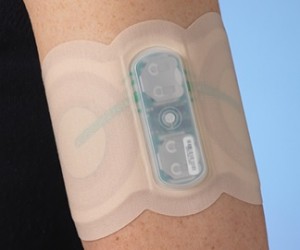 PHOTO: If you’re one of the more than 30 million Americans who suffer from migraines, you know that calling them “just another headache” is like calling a hurricane “just another storm.”
PHOTO: If you’re one of the more than 30 million Americans who suffer from migraines, you know that calling them “just another headache” is like calling a hurricane “just another storm.”
Fortunately, says neurologist Eric Bastings, M.D., deputy director of the Division of Neurology at the Food and Drug Administration (FDA), there are practical measures you can take to prevent painful migraines and FDA-approved medications to either stave off their onset or relieve their pain. There are two basic kinds of medications for migraine: abortive medications (also called acute medications) that treat migraines after they begin, and preventive medications that help keep migraines from developing in the first place.
In January 2013, FDA approved an acute medication that uses a widely-prescribed drug for treating migraines (sumatriptan, name brand Imitrex), but delivers the drug through a new mechanism — a transdermal system in the form of a patch that can be wrapped around a patient’s upper arm or thigh. (Transdermal drug delivery is absorption through the skin.)
“Although consumers are familiar with using a patch for, say, smoking cessation, this is the first patch FDA has approved to treat migraines,” says Bastings.
How the Patch Works
Named Zecuity, the battery-powered patch is manufactured by the pharmaceutical company NuPathe. About 8 inches long and 4 inches wide, it wraps around the arm or thigh much like an ace bandage. According to Bastings, it uses an electrical current to move the drug through the skin over the course of 4 hours. A small battery and computer chip regulate the charge to make sure the patient gets the right dosage.
The patch provides an alternative to pills, nasal sprays and injections. “Many migraine sufferers experience debilitating pain — sometimes so acute that they can’t swallow a pill,” says Bastings.
He adds that some people don’t like the unpleasant taste the nasal spray can leave behind, and others are uncomfortable with injecting themselves.
That said, the patch does have some drawbacks, notes Bastings. For one thing, it’s large enough that it can show when worn under short-sleeved shirts or shorts, and requires some privacy (and at times, the need to undress) to put it on. “For many people, popping a pill is a lot more immediate and simple,” Bastings says.
And the patch is not without side effects: about 25 percent of subjects in the clinical study complained of a painful sensation at the patch application site. Others didn’t like the reddening that most patients developed after using the patch.
What Causes a Migraine?
According to the National Institutes of Health (NIH), about 12 percent of the U.S. population experience migraines. Migraines affect both children and adults, but affect adult women three times more often than men.
Bastings explains that migraines are neurovascular headaches. They are characterized by throbbing and pulsating pain caused by the a temporary widening of blood vessels in the brain, triggered by abnormal activation of nerve pathways involved in the transmission of pain signals.
Characteristics of a migraine frequently include:
- Pain typically on one side of the head
- Pain that has a pulsating or throbbing quality
- Moderate to intense pain that affects daily activities
- Nausea or vomiting
- Sensitivity to light or sound
- Aura, visual disturbances that signal the beginning, such as dots, flashing lights or blind spots
Bastings also says that a number of studies show that migraines are underdiagnosed by patient and physician, alike. “Many people don’t recognize the symptoms as belonging to migraine,” he says. Or they don’t think of sharing information about the occasional headache with their physician, even if it is severe.
FDA-Approved Drugs
FDA has approved a number of drugs for treating acute migraine, including the triptans (such as Imitrex), which bind to serotonin receptors in the brain nerve fibers and blood vessels. (Serotonin acts as a neurotransmitter, a type of chemical that helps relay signals from one area of the brain to another.) There are also non-prescription drugs available “over the counter,” such as ibuprofen, aspirin and acetaminophen.
“These abortive medications work most effectively if taken early in the attack,” Bastings notes.
Many people who experience frequent or severe migraines may use preventive medications, including beta-blockers, a type of blood pressure drug, such as metoprolol. Certain antiepileptic drugs are also prescribed, such as topiramate and divalproex sodium.
In October 2010, FDA also approved Botulinum toxin (known as Botox) for use in treating patients who suffer chronic migraines at least 15 days a month.
Another way to prevent migraines is to learn your personal “triggers” for the headache, Bastings says. Common ones include:
- Certain foods and beverages, such as alcoholic and caffeinated drinks, chocolate and aged cheeses;
- Stress; and
- Changes in waking and sleeping patterns.
“It certainly can help to know your triggers and avoid them when possible,” Bastings says. “Of course if a major trigger is stress, few of us can entirely avoid that in our lives.” TLS/FDA.

